Springy, flavourful rice noodles accompanied by tender chicken slices and crunchy vegetables, chicken chow fun is such a crowd-pleaser. Special dietary adaptation provided.
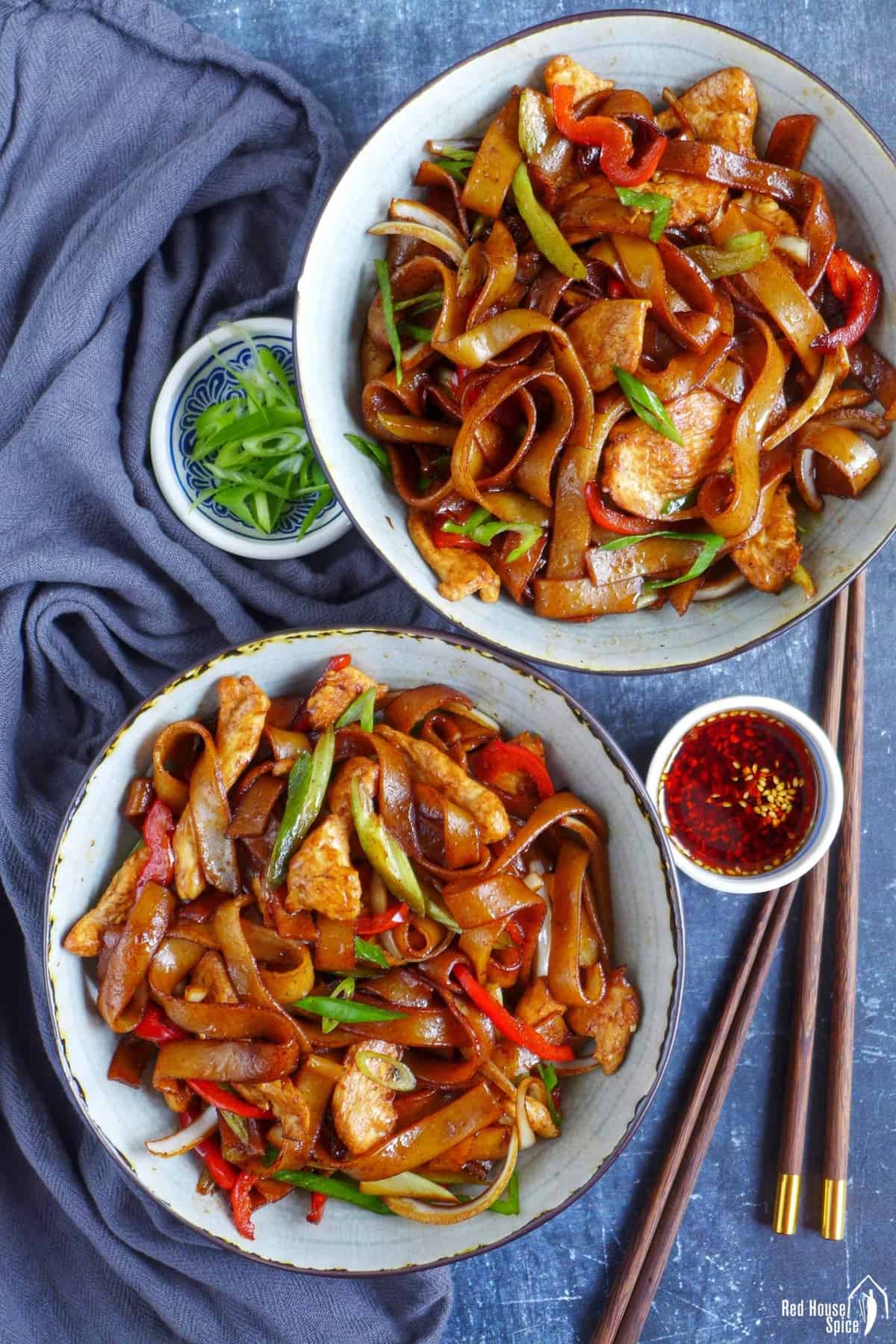
The beauty of noodle dishes is that you have all the nutrients (protein, starch and vegetables) in one single plate/bowl. Today’s dish, chicken chow fun (aka chicken ho fun or chicken fried rice noodles), is one of our family favourites. It has a great combination of textures and tastes so comforting.
If you’re regularly ordering this dish from Chinese restaurants or takeaway/takeout, you should try cooking it yourself. It’s cheaper and highly likely healthier (as you have control over oil and salt). Follow my tips and tricks, you can make it to a restaurant standard.
Ingredients
To make chicken chow fun, you’ll need the following:
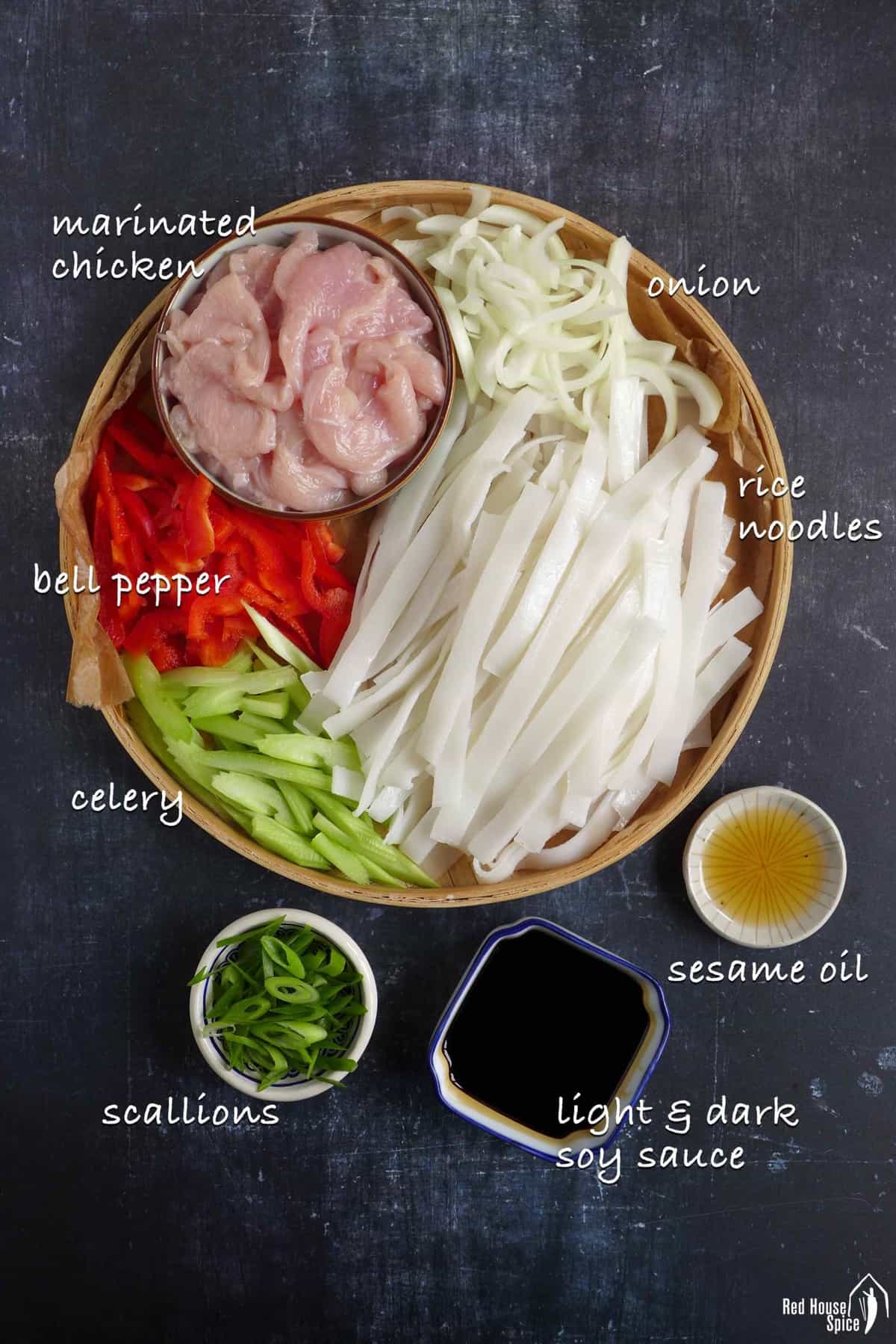

- Wide rice noodles (aka Sa-ho Fun)
- Chicken breast, marinated with cornstarch and salt.
- Three vegetables of your choice
- Soy sauce, both light and dark versions
- Sesame oil
- Scallions, for garnishing
Note: For shooting this recipe, I used onion, bell pepper and celery. You can keep the onion for flavour and choose another two vegetables that you like, such as Chinese chives, bean sprouts, bok choy, choy sum, snow peas, baby corn, mushroom, etc.
Choose and prepare the noodles
Same as the classic Beef Chow Fun (干炒牛河), chicken chow fun calls for wide rice noodles that come both in fresh and dried form. Known as Sa-ho fun (沙河粉) in Chinese, they’re flat, thick, and have a springy texture after cooking (they are different from the thin rice noodles used in Chow Mei Fun). One thing I like the most is their ability to absorb the seasonings (better than wheat noodles in this sense).
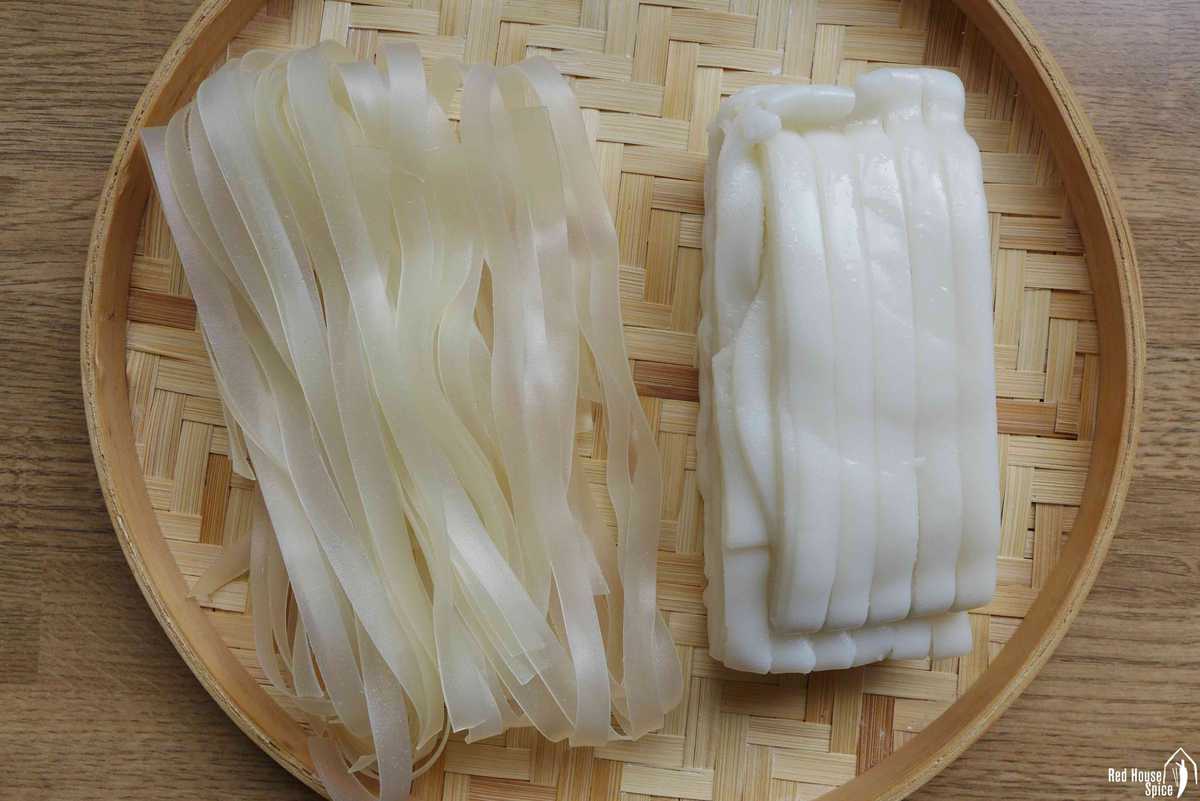

If using fresh noodles
Fresh wide rice noodles are usually sold in blocks in chilled sections of Chinese/Asian stores. They are pre-cut and tightly packed. Before cooking, you’ll need to separate all the strands.
Refrigeration makes rice noodles stiff, brittle and stubbornly sticking to one another. So it can be a boring and time-consuming job to separate them without breaking into small pieces.
Here are three ways to reduce the hassle:
- METHOD 1: Freeze the noodle block then defrost in the fridge. This process will make it much easier to separate the strands. I discovered this method by accident but it works like a charm every time.
- METHOD 2: Separate the block into a few sections then soak in hot water (just boiled) for 30 seconds or so until the noodles loosen. Rinse under cold water then drain well.
- METHOD 3: Bring the chilled noodles back to room temperature. It’ll make separating a little easier but won’t be as efficient as method 1.
If using dried noodles
For many of you, dried rice noodles might be more accessible and you’ll have a wider range of choices. Before you start stir-frying, follow the instructions on the package to cook the noodles (and remember to rinse well afterwards).
From my experiences, it’s better to boil them a little short than the recommended time. This way the noodles have less chance to become mushy after frying.
Noodle Substitutes
Although not a Chinese ingredient, Japanese udon noodles are a great substitute for this dish. Buy the pre-cooked version in airtight plastic packaging. They can be used directly for stir-frying.
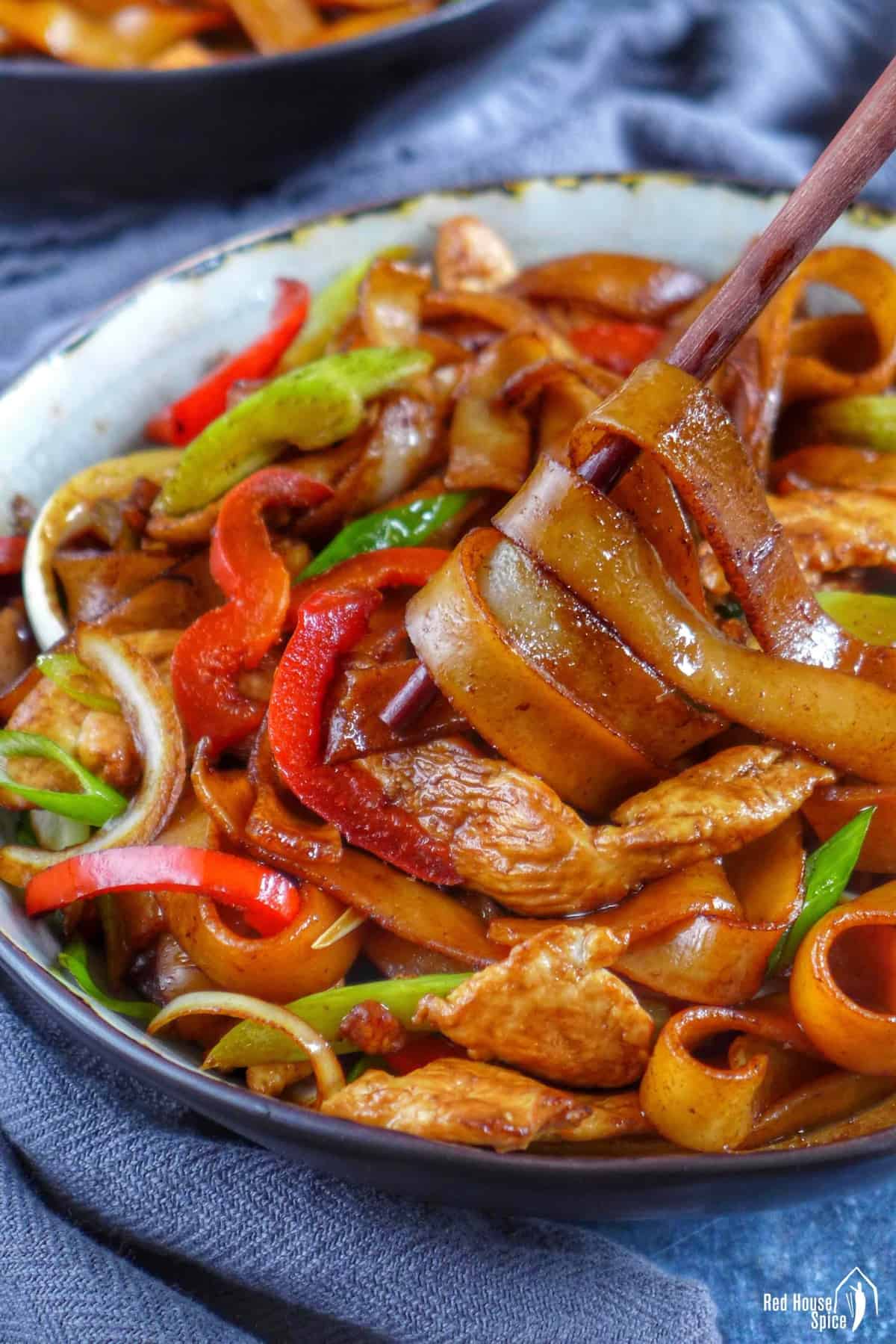

How to make the chicken super tender
The breast is a healthy cut of chicken but prone to dryness. When prepared properly, however, it can remain moist and tender in a quick stir-fry (You know it’s totally feasible if you’ve made my recipe for Chicken Chop Suey). Here are two indispensable processes to help to achieve its best texture:
Marinate beforehand
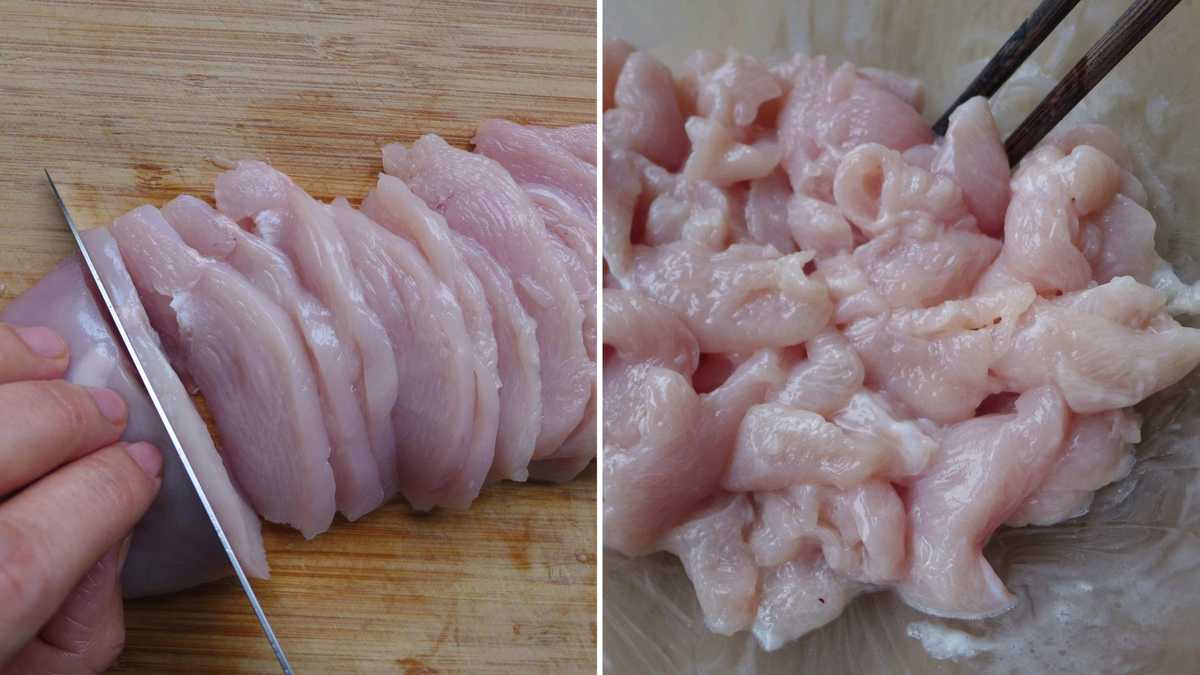

Mix cornstarch, salt and water into a slurry then add the chicken (cut into thin slices). Rub and stir to help the meat fully absorb the liquid (hands do the best job). Then add a little oil to seal the moisture in.
Fry the chicken separately


It’s important to stir-fry the chicken first then dish it out as soon as it loses its pinkness (do not overcook). Put it back into the wok and mix it with other ingredients at the very end of the cooking process. This way, you have less chance to overcook it causing dryness and toughness.
The stir fry procedure
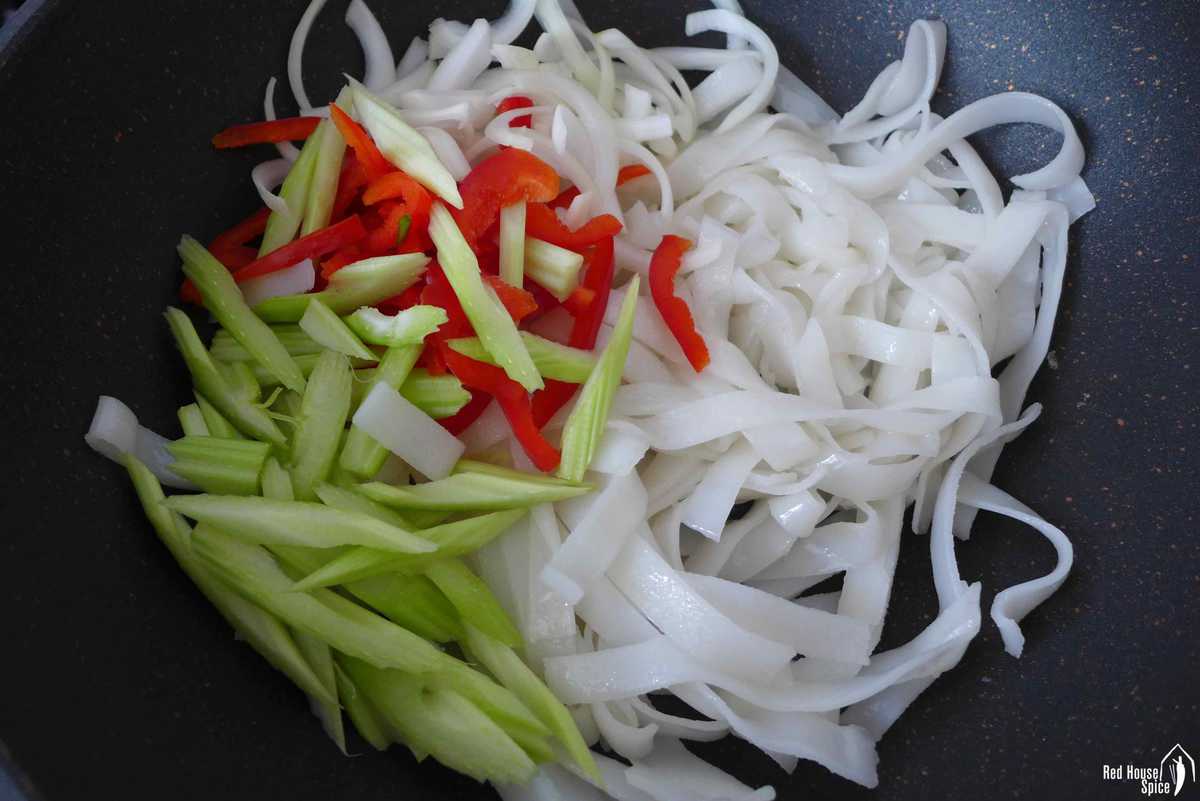

Once you’ve cooked the chicken pieces, add more oil to the same wok (keep any oil left from frying the chicken). Put in the rice noodles. Toss and flip until they begin to wilt (don’t wait until they become very soft). Add sliced vegetables. Stir-fry until theyfor about 30 seconds.
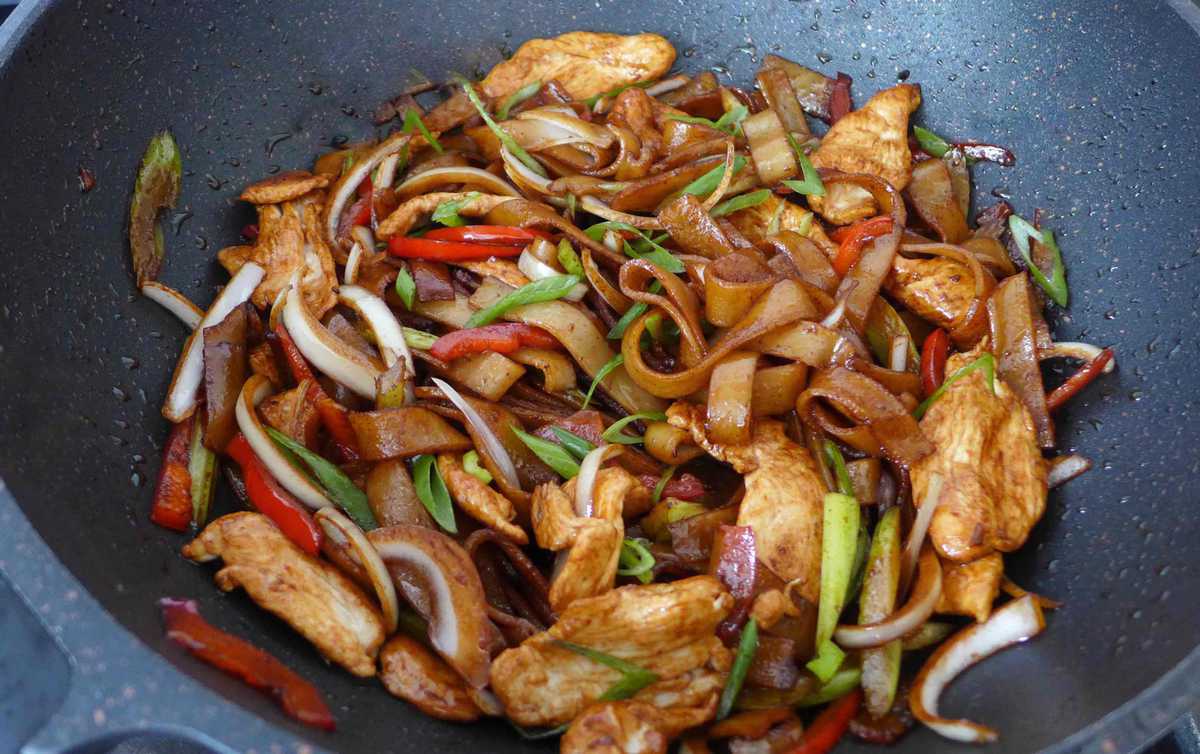

Put in the chicken, along with light soy sauce, dark soy sauce and sesame oil. Flip and toss to evenly distribute the seasoning. Finally, garnish with chopped scallions and serve!
Pro tips
Based on questions I’ve received from other stir-fries and fried noodle dishes, I’d like to share some tips that might be helpful.
Do I have to use a wok?
A wok is indeed essential to Chinese cooking. If you plan to dive into this cuisine deeper and plan to cook Chinese food regularly, I highly recommend you get one. That said, it’s perfectly fine to cook this dish in a regular frying pan/skillet. In this case, make sure it’s large enough and has a high edge.
How to avoid sticking?
If using a traditional carbon steel wok, no matter how well it’s seasoned, you might still encounter sticking problems, especially when cooking meat, rice or noodles. The trick is simple: apply the old “hot wok cold oil (热锅凉油)” method: heat the wok empty until it smokes, then pour in the oil. As long as your wok is hot enough, the food won’t stick to it.
However, don’t apply this technique if using a wok/pan with non-stick coating as you’re not supposed to heat it empty.
How to avoid mushy/burnt noodles
For chicken chow fun, the cooked noodles should be bouncy and springy. If they look or taste mushy, you’ve overcooked them. To avoid this, following these tips:
- Have all the ingredients at easy reach before you start stir-frying, so you won’t have to extend the cooking time by being unprepared.
- Move the wok off the burner temporarily to control the heat if necessary.
- Apart from soy sauce, do not add water or other liquid. This dish isn’t supposed to be wet or saucy. The extra moisture will make the noodles soggy.
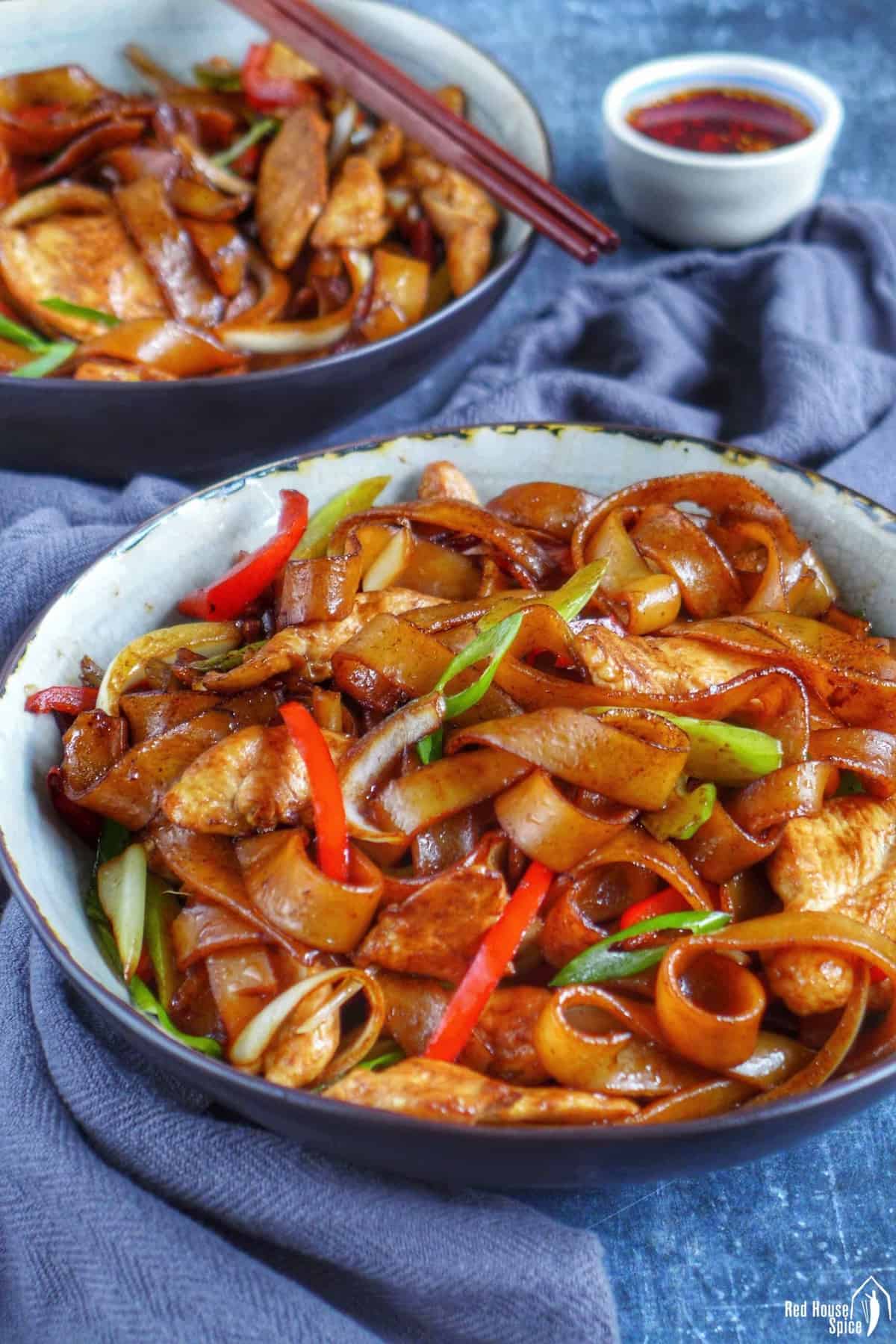

How to prevent the noodles from tearing
Compared to wheat noodles, rice noodles tear more easily due to a lack of gluten. When stir-fried, they have a chance to be broken into smaller pieces. Although this won’t change the taste, it may not be up to your standard visually. To prevent this from happening, here are my two tips:
- Instead of using a utensil, try moving the wok to toss the noodles. Use one or two hands to hold the handle firmly, move the wok away from your body then raise and tilt the far side to flip the food towards you.
- If wok tossing is too much for you, use chopsticks, rather than a spatula, to stir the ingredients.
Do not double the volume
My recipe is for making about two portions of chicken chow fun. You may half all the ingredients and cook for one. However, try not to increase the quantity as too much food in a home size wok/pan (and over a domestic burner) isn’t feasible for achieving the desired result.
Special dietary adaptation
GLUTEN-FREE: Use gluten-free soy sauce or tamari to replace light and dark sauce. The finished dish would look lighter as it doesn’t offer a brown colour like dark soy sauce.
VEGETARIAN: Replace chicken with eggs. Scramble them the way you cook the classic Tomato and Egg Stir-fry.
VEGAN: Use smoked or five-spice tofu as a substitute. Or, fry some regular tofu following instructions found in my recipe for Sichuan Braised Tofu.
Other noodles dishes
Looking for more noodle recipes like this one? Here are a few to try:
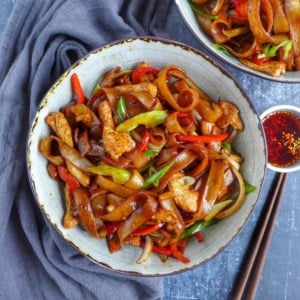

Chicken Chow Fun (Fried Rice Noodles, 鸡肉炒粉)
For the chicken
- 1 piece chicken breast - about 180g/6.3oz
- ½ tablespoon cornstarch, or tapioca starch
- 1 pinch salt
- 1 tablespoon water
- 1 teaspoon neutral cooking oil
For the noodles
- 2 portions fresh wide rice noodles (aka Sa-ho Fun), about 400g/14oz - see note 1 for substitutes
For the Stir-fry
- 2 tablespoon neutral cooking oil - divided
- ½ onion, sliced
- ½ bell pepper, sliced - see note 2 for other options
- 2 stalks celery, sliced diagonally
- 1 tablespoon light soy sauce - see note 3 for gluten free options
- 1 tablespoon dark soy sauce
- ½ teaspoon sesame oil
- 1 stalk scallions, finely chopped
Marinate the chicken
- Cut the chicken breast into thin slices (about 5 mm/0.2 inch thick). Mix cornstarch, salt and water in bowl then add the chicken. Mix very well until the water is fully absorbed. Stir in oil then leave to marinate for 10 minutes or so.
Prepare the noodles
- Fresh wide rice noodles often come as a block and the strands are tightly stuck to each other. You'll need to seperate them before stir-frying. If you find it hard to do, read my tips in the post content above.
Stir-fry the dish
- Heat up a wok over high heat until it smokes (see note 3 if using a wok with non-stick coating). Pour in 1 tablespoon of oil.
- Stir in the chicken. Fry until it loses the pinkness (Do not overcook). Transfer it out. Set aside.
- Add the remaining 1 tablespoon of oil into the wok (keep any oil left from frying the chicken). Put in the rice noodles. Toss them by moving the wok or gently stir them around using a pair of chopsticks.
- Once they start to wilt (don’t wait until they become very soft), add onion, bell pepper and celery. Fry for half a minute or so.
- Add the chicken. Pour in light soy sauce, dark soy sauce and sesame oil. Flip and toss to evenly distribute the seasoning (be gentle not to break the noodles). Garnish with scallions and serve immediately.
NUTRITION DISCLOSURE: Nutritional information on this website is provided as a courtesy to readers. It should be considered estimates. Please use your own brand nutritional values or your preferred nutrition calculator to double check against our estimates.






Nice
Great dish! I added a little hoisin sauce for my own tastes.
Happy to hear you enjoyed it Scott!
Hi!
i don’t have a wok and i have an electric stove. Will this recipe work as well with a regular deep skillet and electric stove? Thanks!
Yes, you can! I’ve mentioned that you may use a skillet. Electric stove works too. Check out the stir-frying tips I’ve shared in the post.